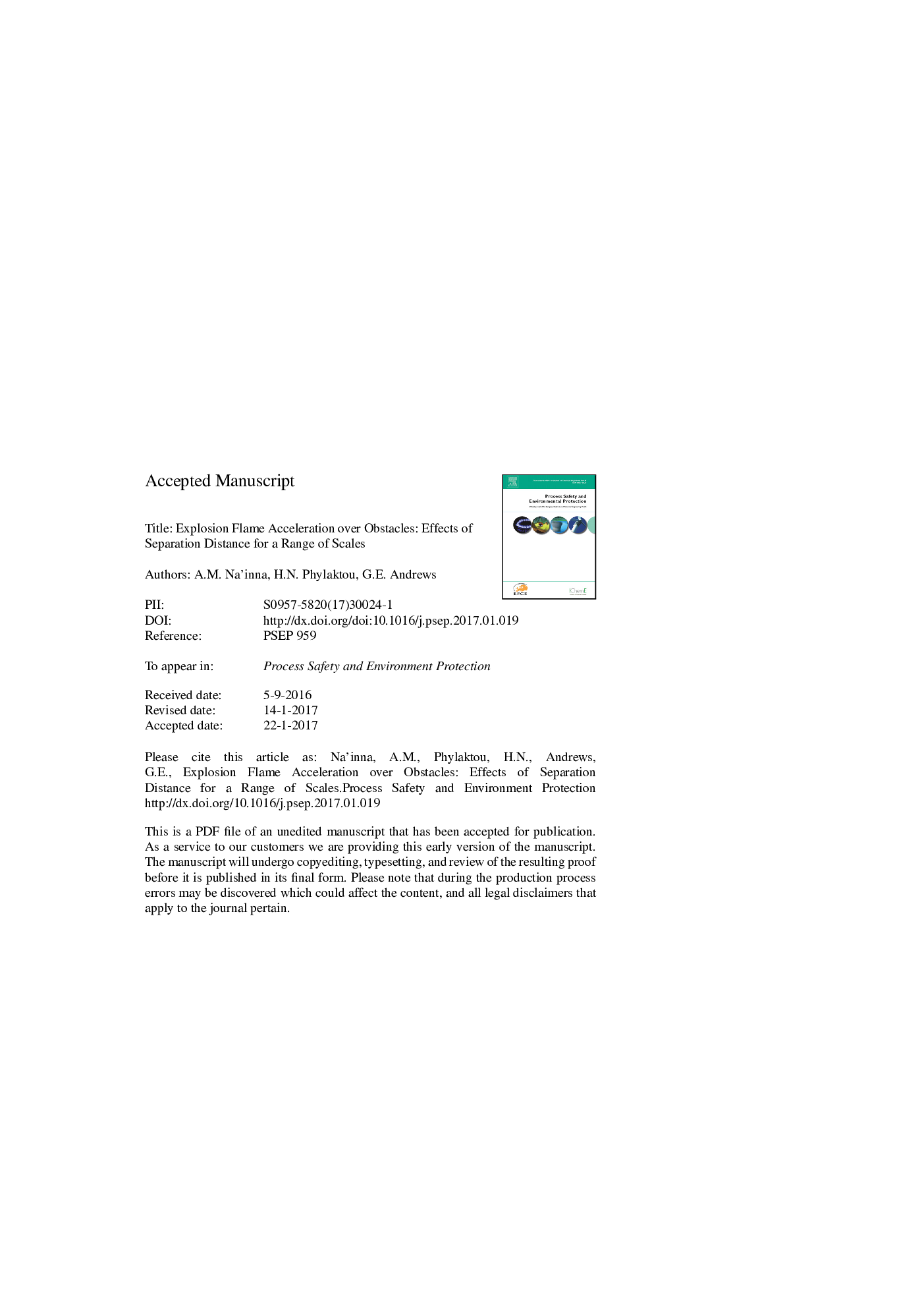| Article ID | Journal | Published Year | Pages | File Type |
|---|---|---|---|---|
| 4980992 | Process Safety and Environmental Protection | 2017 | 22 Pages |
Abstract
The influence of obstacle separation distance on explosion flame acceleration was studied for 10% methane-air mixtures using two 20% blockage obstacles with variable number and width of bars (variable obstacle length scale) were investigated in a 162Â mm diameter 4.5Â m long tube with ignition on the centre of the closed end and flame propagation towards the open end. The spacing between the obstacles was varied from 0.25Â m to 2.75Â m. It was observed that the maximum overpressure and flame speed increased with the reduction in number of flat-bars (i.e. with increasing obstacle length scale). A maximum overpressure of 129Â kPa at 2.25Â m obstacle spacing was achieved with 1-flat-bar obstacles, followed by 118Â kPa and 110Â kPa for 2 and 4-flat-bars respectively at 1.25Â m and 0.5Â m obstacle separation. Turbulent to laminar burning velocity ratios downstream of the second obstacle at the optimum spacing for maximum interaction were in the range of 62-122. These are the magnitudes of flame acceleration required to explain overpressures in vapour cloud explosions in the presence of obstacles. It is worth appreciating that two obstacles of lower blockages but spaced optimally could generate higher explosion severity in terms of overpressure, flame speed and turbulence level similar to real gas explosion incidents.
Related Topics
Physical Sciences and Engineering
Chemical Engineering
Chemical Health and Safety
Authors
A.M. Na'inna, H.N. Phylaktou, G.E. Andrews,
